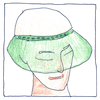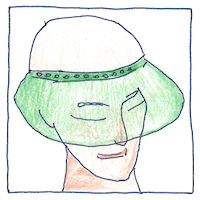Alexander Parkes
materials science

|
Celluloid
In Hackney Wick in east London, Alexander Parkes made Parkesine—the first man-made plastic, a nitrocellulose, also known as pyroxylin and synthetic ivory. Parkes’ factory failed and alternatives appeared. Daniel Spill, an associate of Parkes, made Xylonite and Ivoride. John Wesley Hyatt and his brother Isaiah made Celluloid. A French company made Ivorine. The Seth Thomas company made Adamantine. George Henry Burt made Crystalate. Celluloid was used for film stock, jewellery, and combs. Billiard balls, buttons, toys, dolls, pens, and accordions. Knife handles, slide rules, guitar picks, and table tennis balls.
Plastic
Celluloid, colored, cut, and molded, transparent or opaque, flexible or stiff, in many shapes and sizes for uncountable uses. The word ‘plastic’ means capable of being made into any shape.
Flammable
Later plastics avoided the flaws of celluloid, less flammable, less likely to explode, and less likely to deteriorate when exposed to heat or moisture. Picasso said it’s difficult to make something new so that at first it might be ugly.



John Wesley Hyatt took the discoveries of Alexander Parkes and made things out of it to sell. His patented product name, Celluloid, became the generic name for this plastic.
See also in The book of science:
Readings in wikipedia: